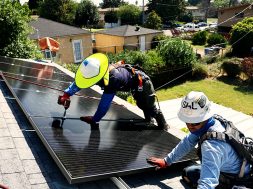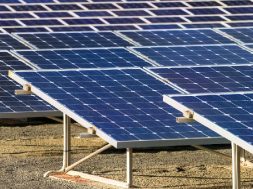
70% of electricity at pharmacy college in Kalina, Mumbai, comes from sunlight
453 solar panels installed across a 13,500 sq ft terrace generate 15,399 units of electricity every month at Bombay Pharmacy College in Kalina.
One of the largest rooftop solar power generation system in Mumbai helps Bombay Pharmacy College in Kalina to power 70% of its electricity requirements from the sun.
The college saves Rs1.6 lakh every month in electricity bills by running the 140 kilowatt-power (kWp) system that has 453 solar panels installed across a 13,500 sq ft terrace area. The system generates an average 15,399 units of electricity per month and runs lights, fans, air-conditioners, and lifts across 13 laboratories, seven classrooms, the college administration office area and the canteen. For a comparison, a two-bedroom flat in Mumbai uses 300-360 units of electricity per month.
Solar energy, apart from being renewable and free, does not cause pollution unlike power plants that burn coal, gas and oil. Solar energy can be used in remote areas where electricity from the grid cannot be accessed.
Nitin Navnitray Maniar, chairman, governing body, Bombay Pharmacy College and special executive officer for the state government, said, “We went for such a large-scale setup because this energy source is both eco-friendly and cost-effective, and allows us to give something back to the environment.”
Founded by the Indian Pharmaceutical Association, Maharashtra State Branch in 1957, the college has over 400 undergraduate, postgraduate and PhD students along with 80 teachers and staff members. The college is spread across 65,000 sq ft area with one quarter-of-an-acre garden that has medicinal plants and a large ground allocated for extracurricular activities and events.
The solar project was completed in two phases. In the first phase, a 50kWp setup at a cost of Rs39.5 lakh in May 2015, and in the second phase in February this year, a 90kWp unit was installed for Rs49.5 lakh. “We expect to recover the entire Rs89 lakh by 2021. We have already received Rs14.59 lakh in the form of subsidy (30%) from the state government. We estimate annual savings of Rs20 lakh from this project,” he said.
Prior to the solar installation, the monthly electricity bill for the college was Rs3.25 lakh that fell to Rs1.65 lakh post installation. The campus also uses a net-metering system, which allows surplus power generated through solar panels to be sent back to the grid and any deficiency is imported from the grid.
The college also has a rainwater harvesting system that collects water during the rains for use later. The college estimates that it has saved close to 32 lakh litres of water through rainwater harvesting since 2009. The college complex does not depend on the civic body for its non-potable water consumption. The rooftop and common areas act as catchment for rainwater. The water collected is channelled into to a well with a capacity of 50,000 litres, and the water is used in the 45 washrooms on campus. “The water is also used in our gardens. Channels have been dug up through the campus that allows water to drain into the well,” said Maniar.
Maniar added that within a month’s time, the campus will also have a functional composting system, which will breakdown the entire organic waste generated at the canteen to manure. “We will also reach out to hotels and other complexes to share their wet waste, which we will return to them as manure,” he said.















